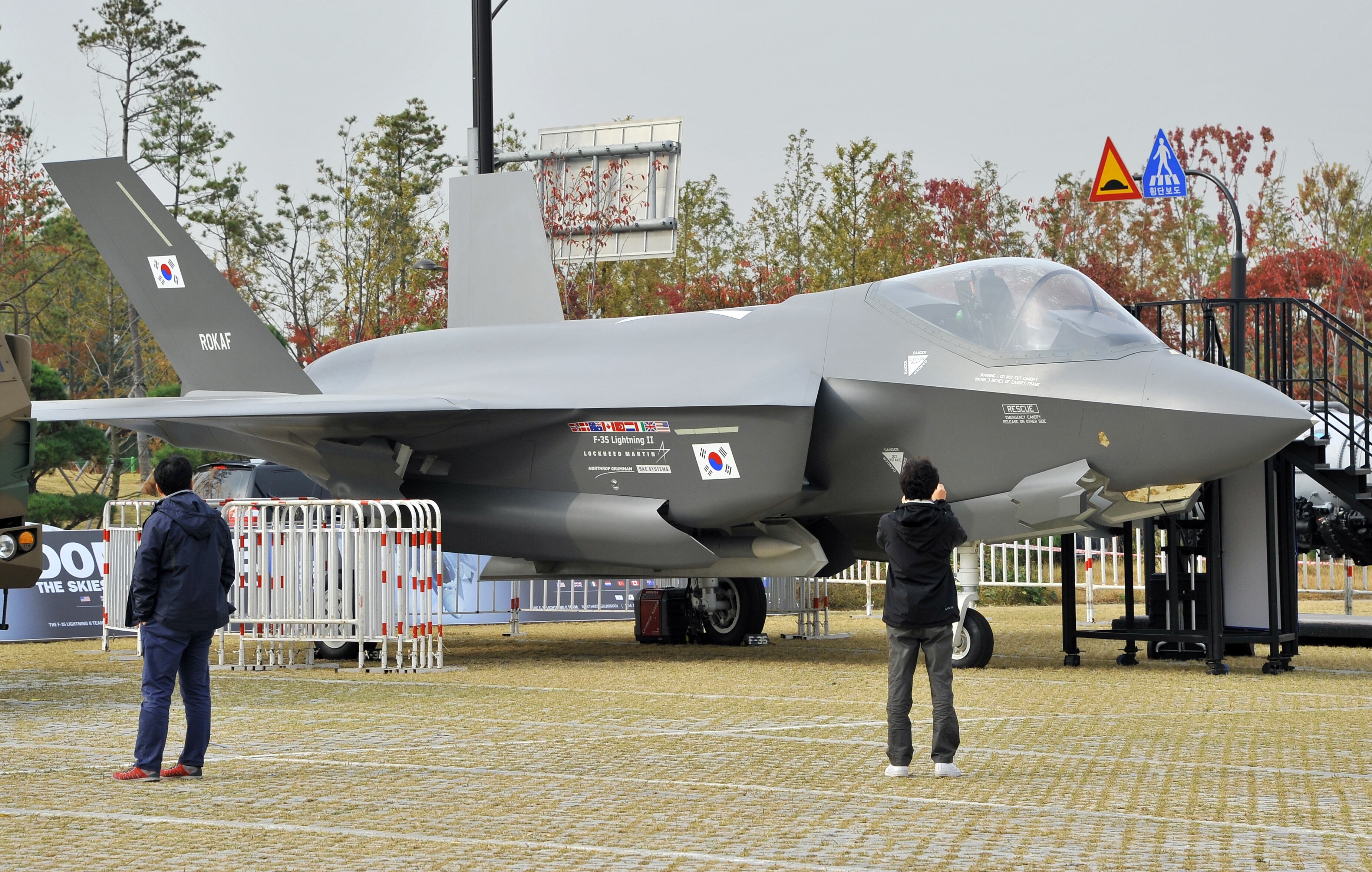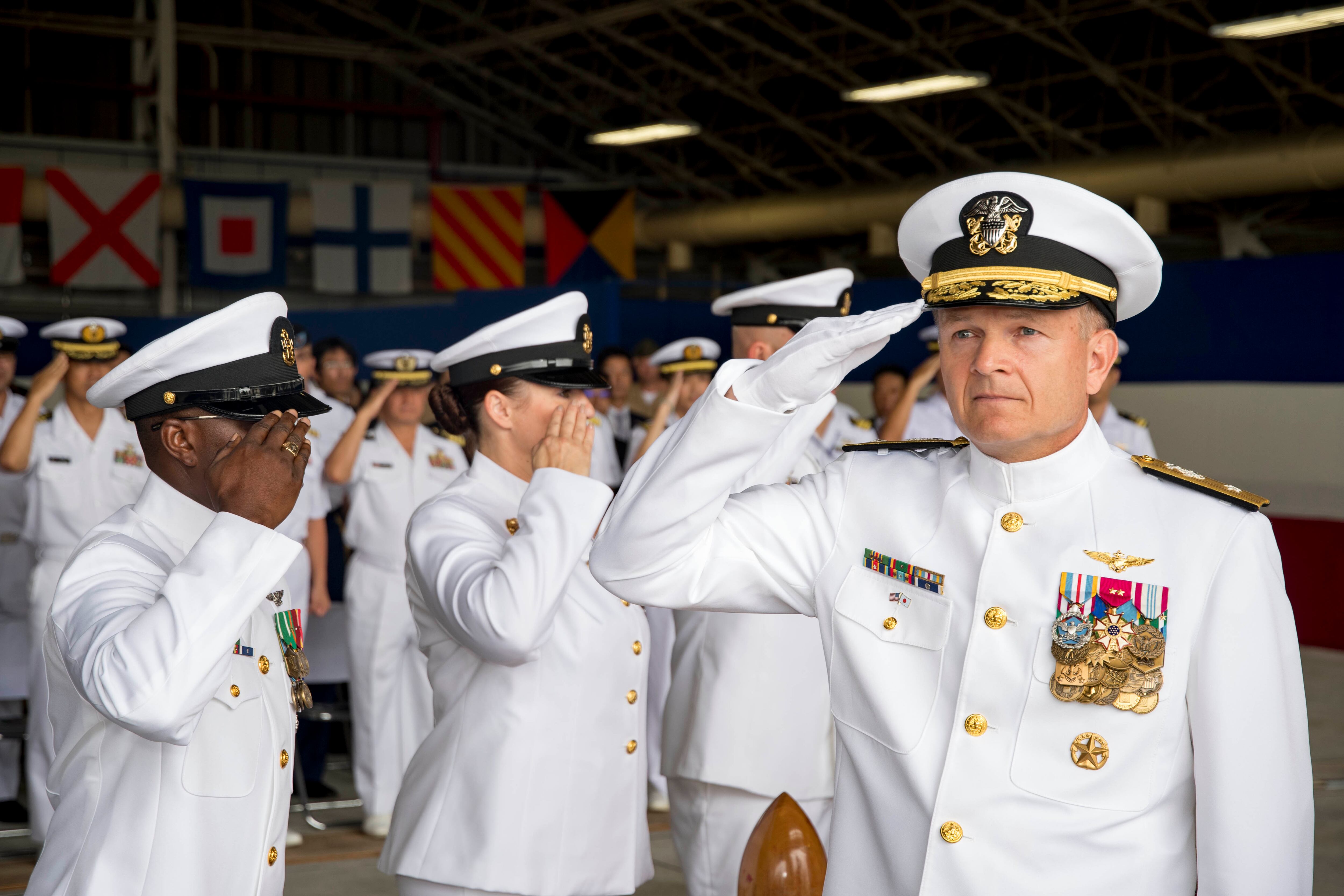WASHINGTON ― In an era where the American president wants allies to Buy American, two of America’s closest friends in Asia have proven to be loyal customers.
As U.S. President Donald Trump sat down with South Korean President Moon Jae-In at the White House on Tuesday, a new pair of fact sheets released by the U.S. State Department have laid out how much both Seoul and Tokyo are spending on American defense equipment.
From 2000-2017, South Korea contracted roughly $26 billion in Foreign Military Sales from American firms. Under the FMS process, the U.S. government acts as a go-between for the foreign customer and the American defense industrial partner, taking a small fee for its troubles.
RELATED

But half of that total has come in just the last four years, during which the Korean military purchased more than $13 billion in defense articles, training and services.
That high price tag is driven largely by a decision to go all-in on high-end American capabilities, including the F-35 Joint Strike Fighter, Global Hawk UAV, KF-16 aircraft upgrades, Aegis combat systems, Patriot Advanced Capability-3 upgrades, Harpoon missiles and AH-64E attack helicopters.
Tokyo, meanwhile, has $19.6 billion in active FMS cases, the State Department says. As with South Korea, that total is being driven by major platforms, such as the F-35, the Aegis combat system, E-2D Airborne Early Warning Aircraft, the KC-46 refueling tanker, the Global Hawk and the Osprey MV-22 tilt-rotor aircraf, but also by heavy investments in missiles like the AIM-120 Advanced Medium-Range Air-to-Air Missile, the UGM-84 Harpoon and the SM-3 Block IIA ballistic missile defense interceptor missiles.
Those numbers expand when looking at Direct Commercial Sales of military equipment, where the countries can contract directly with the company. Between 2013 and 2017, the two nations were authorized for $22.3 billion in DCS agreements.
That includes $14.4 billion in defense articles to Japan, including “aircraft parts, military electronics, launch vehicles, spacecraft systems, missiles, gas turbine engines and associated equipment,” as well as $7.9 billion for South Korea, largely focused on “aircraft, gas turbine engines, and military electronics.”
RELATED

Both nations also take part in foreign peacekeeping operations, in coordination with American forces and the United Nations.
South Korea currently has 600 personnel deployed to six peacekeeping missions around the world. Japan provides engineering, medical and communications capabilities for some of those missions ― a role that could expand eventually if Japan’s pacifist constitutional stance is amended.
Aaron Mehta was deputy editor and senior Pentagon correspondent for Defense News, covering policy, strategy and acquisition at the highest levels of the Defense Department and its international partners.








